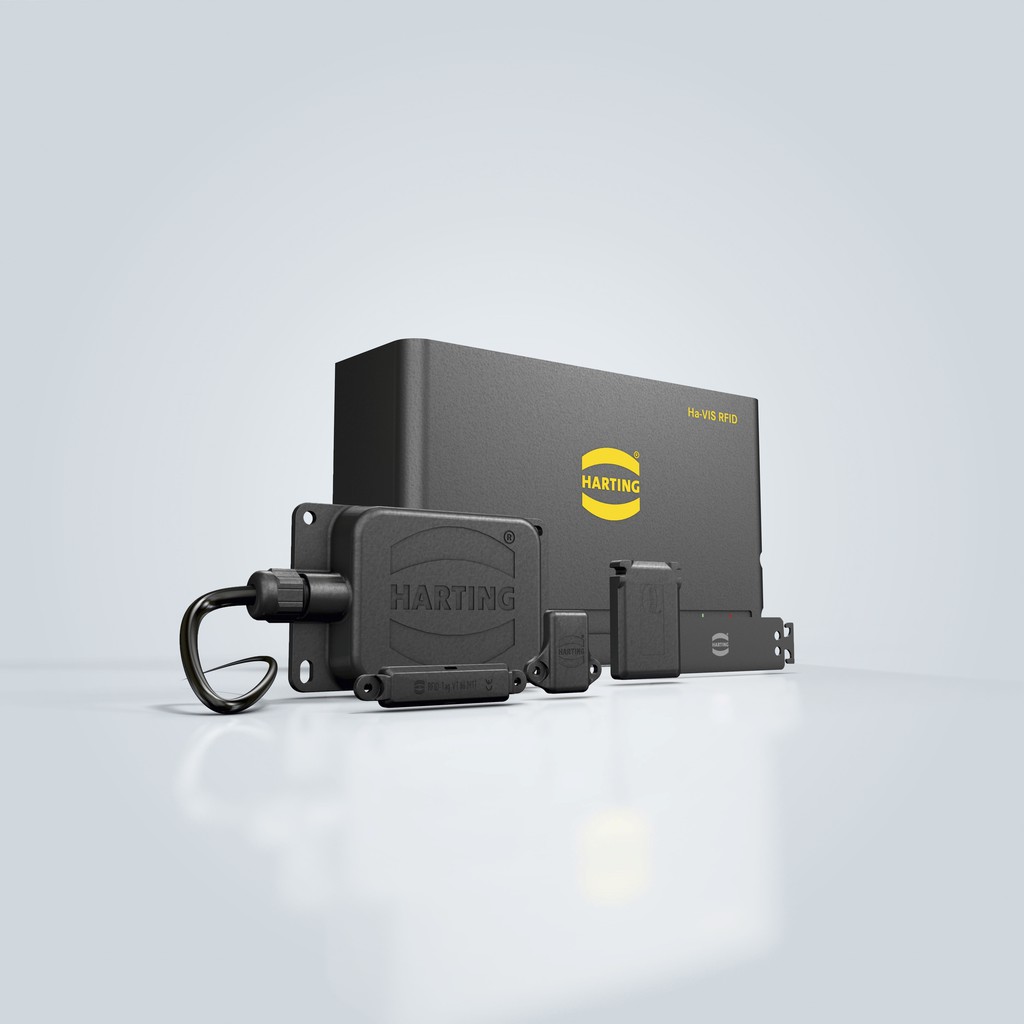
 |
Charlotte Stonestreet
Managing Editor |
| Home> | IIot & Smart Technology | >IIoT | >Improve manufacturing logistics efficiency |
Editor's Pick
Improve manufacturing logistics efficiency
23 February 2018
At Smart Industry Expo, Harting is demonstrating its range of automation solutions for improving the efficiency of manufacturing logistic processes based on the concepts of Integrated Industry 4.0 and the Internet of Things.

Harting’s approach to smart manufacturing is based on the addition of intelligence to manufacturing processes with the aim of achieving a high level of connectivity, visibility, awareness, and adaptability at all stages in the supply chain. By enhancing users’ processes with RFID technology, Harting makes it possible to implement solutions that deliver real profitability gains without the need for re-engineering already proven, stable manufacturing processes.
The two key elements of Harting’s approach are machine-to-machine communications and manufacturing logistics. Machine-to-machine communications is typically concerned with the transmission of information obtained from the monitoring of production equipment to improve diagnostics and to enable effective preventative maintenance.
Manufacturing logistics replaces the existing supply chain management model with the use of intelligent systems to implement functions such as supplying the line with discrete and accurate quantities of materials; ensuring goods flow on a “just in time” schedule, and faithfully tracking assets and inventory in the warehouse and in transit.
Harting’s approach to manufacturing logistics involves the use of RFID sensor networks to collect manufacturing data which is then “operationalised”, allowing, for example, production lines to be adjusted, maintained, or re-tooled, based on live information. The ability to use this manufacturing data rapidly to inform IoT systems can be invaluable to users in creating a competitive advantage in complex markets.
New developments in RFID technology being featured by Harting include the unique Ha-VIS LOCFIELD flexible coaxial travelling waveguide antenna, which can sense multiple transponders via an RF field radially extended over its length of up to 10 metres. It can be applied in limited space applications where normal patch antennas would be difficult to install. Also on show is the compact Ha-VIS RFID RF-R300 reader, whose rugged construction and IP67 degree of protection means that it can be sited in harsh environment conditions, and a comprehensive range of passive transponders that can be applied on all types of materials, including metal surfaces.
Harting now allows manufacturers to integrate together the two key manufacturing IoT elements of machine-to-machine communications and manufacturing logistics through its new open-source industrial computing device known as MICA (Modular Industrial Computing Architecture). MICA can save, evaluate and process data from sensors, and can then either act as a stand-alone offline computer that can make local decisions or operate as a gateway via the internet to allow access to a higher-level IT system. It operates with open architecture software, allowing it to be very easily customised. Software applications run in Linux-based containers which hold all the necessary libraries and drivers. As a result, there should be no concerns over data security when MICA is allowed access to a higher-level production operating network.
By applying both these innovative solutions - passive UHF RFID and MICA technology - Harting allows production line manufacturing managers to monitor the condition status of key machinery in real time for material supply chain management or preventative maintenance issues. They can then carry out continuous control adjustments through the separate simple, compact and reliable computing device which provides secure access to the main operating software system to maximise process efficiencies. As a consequence, users can achieve important productivity gains.
Also targeting smart factory applications is a new module from Harting’s Han-Modular family of industrial connectors. By integrating intelligent active device technology directly at the field connectivity level, connectors such as the Han ID Module enable manufacturers to improve the operational performance of machines using a modular “plug & play” control architecture, supporting the Industry 4.0 “smart factory” philosophy for ongoing production process improvements.
These connectors are able to separately identify each machine module and store such information within the main automation system via a direct interface to the I2C or CAN network control bus. Each machine module can then be instantly recognised as it is fitted or replaced within the system, saving machine set-up time and limiting operator error by ensuring that the correct module is applied according to the operational requirements.
Besides the identification of components and machine elements, these “smart” connectors are also increasingly being deployed in predictive maintenance operations. Stand S244
- Strong revenue growth
- What is Integrated Industry?
- New webinar series from Harting
- Outdoor housings
- Direct sealing
- Drive industrial transformation at Industrial Ethernet Week
- Integration with high mating cycle connectors
- New connector ranges
- Harting to showcase latest products
- Differential current transformer
- Industry 4.0 ready
- What operators need to know about IIoT adoption
- Predictive maintenance leader
- The digital future has begun
- The smart future of manufacturing
- Partnership integrates freight & warehouse management
- Secure data handling
- Makes IoT available in practice
- When & where will Industry 4.0 actually happen?
- Simplifying IIoT & product suite understanding


















